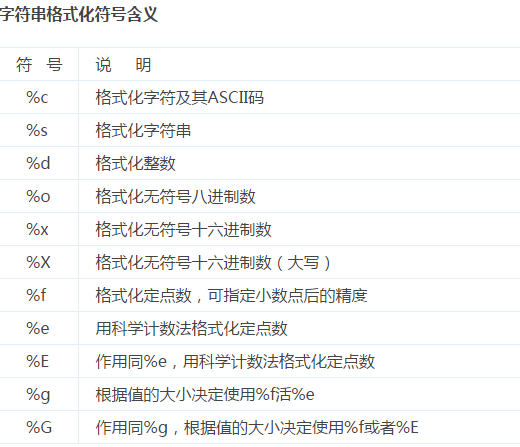python字符串格式化 复制代码
Posted
tags:
篇首语:本文由小常识网(cha138.com)小编为大家整理,主要介绍了python字符串格式化 复制代码相关的知识,希望对你有一定的参考价值。
Python 2.7.12rc1 (v2.7.12rc1:13912cd1e7e8, Jun 12 2016, 05:57:31) [MSC v.1500 64 bit (AMD64)] on win32
Type "copyright", "credits" or "license()" for more information.>>> str1="i love fish">>> str1[:6]‘i love‘>>> str="111eee">>> str.isalnum()
True>>> str6="i love cppc">>> str‘111eee‘>>> str6‘i love cppc‘>>> str6.splice()
Traceback (most recent call last):
File "<pyshell#7>", line 1, in <module>
str6.splice()
AttributeError: ‘str‘ object has no attribute ‘splice‘>>> str6.split()
[‘i‘, ‘love‘, ‘cppc‘]>>> str6‘i love cppc‘>>> str6.title()‘I Love Cppc‘>>> "{a} love {b}.{c}".format(a=‘i‘,b=‘fish‘,c=‘com‘)‘i love fish.com‘>>> {0}.format("ni")
Traceback (most recent call last):
File "<pyshell#12>", line 1, in <module>
{0}.format("ni")
AttributeError: ‘set‘ object has no attribute ‘format‘>>> "{0}".format("ni")‘ni‘>>> {{0}}.format("ni")
Traceback (most recent call last):
File "<pyshell#14>", line 1, in <module>
{{0}}.format("ni")
TypeError: unhashable type: ‘set‘>>> "{{0}}".format("ni")
File "<pyshell#15>", line 2 "{{0}}".format("ni") ^IndentationError: unexpected indent>>> "{}".format("ni")‘ni‘>>> "{{0}}".format("ni")‘{0}‘>>> "{0:.1lf}{1}".format(27.546,GB)
Traceback (most recent call last):
File "<pyshell#18>", line 1, in <module> "{0:.1lf}{1}".format(27.546,GB)
NameError: name ‘GB‘ is not defined>>> "{0:.1lf}{1}".format(‘27.546‘,‘GB‘)
Traceback (most recent call last):
File "<pyshell#19>", line 1, in <module> "{0:.1lf}{1}".format(‘27.546‘,‘GB‘)
ValueError: Invalid conversion specification>>> "{0:.1lf}{1}".format(27.546,‘GB‘)
Traceback (most recent call last):
File "<pyshell#20>", line 1, in <module> "{0:.1lf}{1}".format(27.546,‘GB‘)
ValueError: Invalid conversion specification>>> "{0:.1f}{1}".format(‘27.546‘,‘GB‘)
Traceback (most recent call last):
File "<pyshell#21>", line 1, in <module> "{0:.1f}{1}".format(‘27.546‘,‘GB‘)
ValueError: Unknown format code ‘f‘ for object of type ‘str‘>>> ‘{0:.1lf}{1}‘.format(27.546,‘GB‘)
Traceback (most recent call last):
File "<pyshell#22>", line 1, in <module> ‘{0:.1lf}{1}‘.format(27.546,‘GB‘)
ValueError: Invalid conversion specification>>> "{0:.lf}{1}".format(27.546,‘GB‘)
Traceback (most recent call last):
File "<pyshell#23>", line 1, in <module> "{0:.lf}{1}".format(27.546,‘GB‘)
ValueError: Format specifier missing precision>>> "{0:.1f}{1}".format(27.546,‘GB‘)‘27.5GB‘>>> ‘%c %c %c‘ % (97,97,99)‘a a c‘>>> ‘%e‘ % 27.3342‘2.733420e+01‘>>>



以上是关于python字符串格式化 复制代码的主要内容,如果未能解决你的问题,请参考以下文章